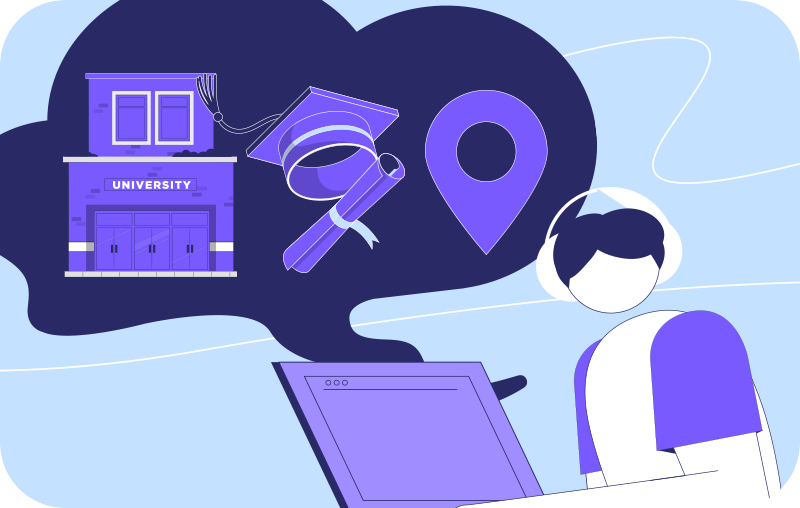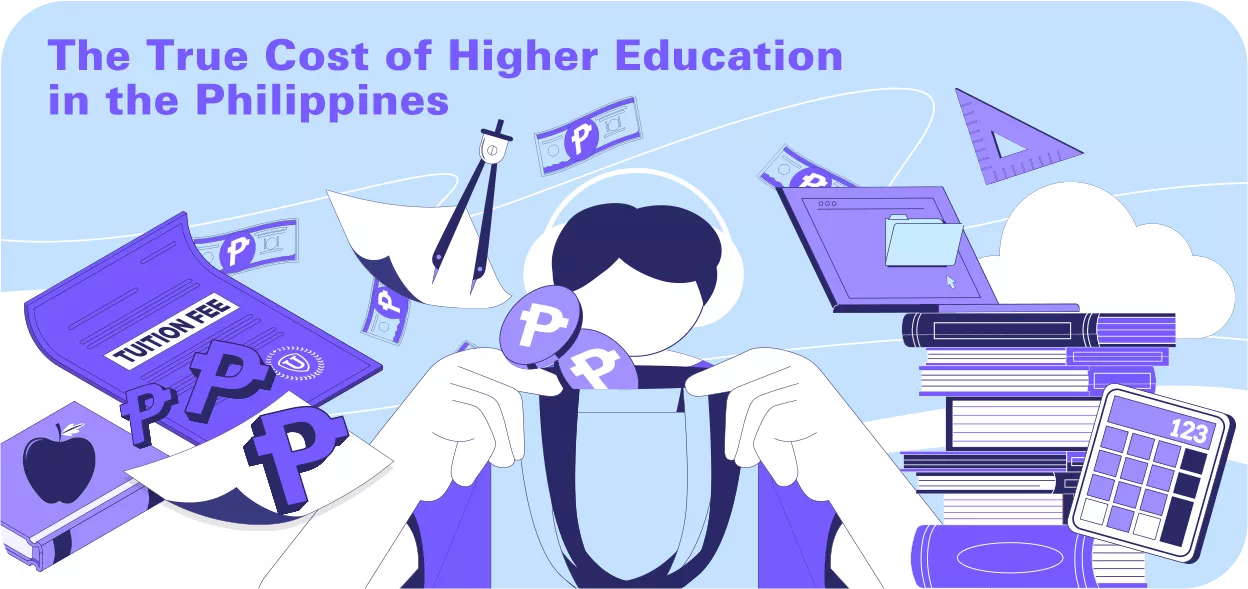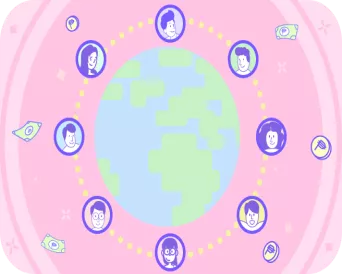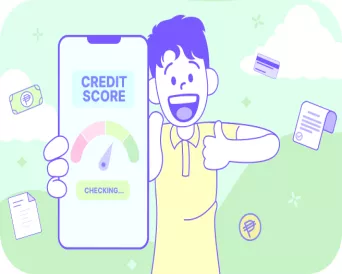It’s finally August and this means… back to school season is upon us! Meeting new friends, reading new books, and learning new things can be exciting. But let’s not forget that a new academic year means new expenses that could put an even bigger dent on our already exhausted pockets.
To help you ease your worries, we’ve created a comprehensive guide that will tell you everything you need to know about college expenses in the Philippines. So, fasten your seatbelts and prepare to delve into the nitty-gritty of what it truly takes to earn that degree.
Table of Contents
Overview of the Philippine Education System
The Philippine education system has undergone significant changes in recent years. Here are some of the biggest shifts that affected how long (and how much) we’re spending in quality education in the Philippines.
K-12 Program
Previously, basic education in the Philippines only consisted of six years of elementary education and four years of high school. But with the enactment of the K-12 Program in 2013, Filipino students must undergo two more years of Senior High School. The Government decided to lengthen basic education in the Philippines to provide sufficient time for mastery of concepts and skills and to prepare graduates for higher education, employment, and entrepreneurship. This meant that parents had to prepare themselves for two extra years of expenses, too!
But here’s the thing: 10 years after the implementation of the K-12 program, companies remain hesitant to hire K-12 graduates. In fact, the Department of Trade and Industry even appealed to employers to hire K-12 graduates as they continue to flood the job market.
Faced with this reality, the administration says it’s focusing on the employability of SHS graduates for their pending K-12 review.
Academic Calendar Shift
Some major colleges and universities in the Philippines opted to shift their academic calendar from June to August back in 2014. The reason? They wanted to synchronize their calendars to international education standards. The Department of Education was forced to follow suit only in 2020 at the height of the COVID-19 pandemic. Because of this, schools now open in August and end in May. This meant that students had to go to school in the scorching summer heat while “summer” breaks happened during the rainy season.
Things may soon change with the DepEd reviewing the academic calendar. But for now, school starts in August.
Free Tuition Law
The Free Tuition Law, more formally known as Republic Act No. 10931 or the Universal Access to Quality Tertiary Education Act was signed into law in 2017. This meant that 112 state universities and colleges, 78 local universities and colleges, and all technical-vocation education training programs under the TESDA offer free tuition and miscellaneous fees.
While these efforts have made higher education more accessible, there are still various costs associated with pursuing a college degree in the Philippines.
TOCFactors Affecting the Cost of Higher Education

-
Course
Your chosen course isn’t just going to dictate your future career. It’s also going to impact how much your tertiary education costs, luv! Usually, a bachelor’s degree takes 4-5 years to finish. But there are also associate or diploma courses that you can graduate from in just 2-3 years. So, choose wisely! -
Type of School
Aside from knowing what course you want to study; you must also choose whether you’re attending a public or a private school. As mentioned earlier, state universities and colleges in the Philippines now offer free tuition and other school fees. But because of this, competition can be tough! After all, there are limited slots every year due to budget constraints.
On the other hand, if you do opt-in to enroll in a private college or university, you better be prepared to spend! On top of pricey fees, some high-end universities also offer trimester or even four semester programs. -
Location
The cost of living varies greatly depending on where you live in the Philippines. If you choose to study in Metro Manila, then be ready to spend more on living expenses. In contrast, choosing to study in a school located in the province can help you save money.
Of course, it goes without saying that if you decide to pursue college abroad, then the costs would shoot up.
Cost of Higher Education: In Numbers

-
Tuition Fees
Tuition fees can vary significantly depending on the type of institution. Public universities and colleges covered by the Free Tuition Law offer tuition-free education, but private institutions charge tuition fees that range from affordable to costly. For some prestigious private universities, annual tuition fees can reach hundreds of thousands of pesos.
Estimated Cost: PHP 0 to PHP 300,000 per academic year -
Miscellaneous Fees
Apart from tuition, college students also incur miscellaneous fees. Miscellaneous fees usually cover electricity, library fees, laboratory fees, and academic support services.
Estimated Cost: PHP 0 to PHP 15,000 per academic year -
Academic Expenses
Academic expenses include the cost of textbooks, school supplies, and other learning materials. But this depends on your course. If you’re studying to become an artist or a chef, your academic expenses can rise pretty quickly.
Estimated Cost: PHP 10,000 to PHP 20,000 per academic year -
Living Expenses
When it comes to accounting for how much higher education costs, you can’t discount your living expenses. These include rent, food, transportation, and other daily needs that you must spend while studying. As mentioned earlier, these expenses vary depending on where you live, how close you are to your school, and your specific needs and preferences. So, if you plan and budget wisely, you’d be able to spend relatively less on living expenses without sacrificing your quality of life.
Estimated Cost: PHP 60,000 to PHP 100,000 per academic year
Suggested Read: Double Duty: Maximizing Savings for the Filipino Sandwich Generation
TOCWays to Fund Higher Education
-
Scholarships
Keep your eyes peeled for various scholarships offered by the government, private organizations, and universities themselves. Each scholarship comes with its unique set of criteria – from academic excellence to exceptional talents or even your family's financial background. So, whether you're acing your exams, dazzling on the basketball court, or simply coming from a less privileged background, there's a scholarship out there waiting for you.
Don't be shy to apply, luv! You never know when your dedication and hard work might get rewarded with the ultimate gift – a free ticket to pursue your dreams. -
Employment
Yes, the idea of juggling a part-time job alongside your studies might sound like a challenging task. But trust us, it's a rewarding journey. On-campus jobs or part-time gigs in the local community not only help you earn extra cash to cover some expenses, but they also offer a taste of the real world beyond the four corners of classrooms.
You'll gain valuable life skills like time management, responsibility, and teamwork, all while building your network and resume. It's a chance to prove your mettle and show the world that you're not just a student; you're a future professional in the making. -
High-Interest Savings
Consider setting up a high-interest savings account like PAGIBIG MP2 or exploring digital bank offers like the Tonik Stash. These accounts offer better returns compared to traditional savings options, which means your hard-earned money multiplies faster.
By regularly setting aside a portion of your income, you'll see your savings grow over time. When the time comes to pay for tuition or other college expenses, you'll have a pleasant surprise waiting for you in that magical account. -
Investments
Make investments for your (or your child’s future). Educational plans, also known as pre-need plans, allow you to make periodic payments, and they mature at a future date to cover educational costs. It's a long-term investment that ensures a steady source of funding for your college expenses.
If you're feeling a bit adventurous, explore the world of stocks. While riskier, they have the potential for higher returns over time. With careful research and guidance, you might find your money working harder than you ever imagined. -
Loans
We get it. Sometimes life throws you curveballs, and you find yourself in a financial pinch. That's why, for such situations, it’s okay to take out a loan. Loans act as a lifeline for students who can't cover the full cost of higher education upfront. In fact, a UNESCO study found that as much as 36% of Filipino families apply for loans to send their kids to school.
But loans aren’t just great to cover tuition fees. It’s also a good choice for immediate big-ticket purchases in school. Need a laptop for class but can’t afford a good one? Consider getting a loan. A good laptop is a great investment for your education and productivity. It’s going to help you save time and more money since good laptops tend to last longer, too!
Now, if you’re looking for a loan that’s convenient, fast, and has super low interest, apply for Tonik Quick Loan and get approved quickly, all from your Tonik App.
The True Cost of Higher Education
By now, you have a clearer picture of what it’s like to pursue higher education in the Philippines. Based on the estimates, you could be spending at least PHP160,000 to up to PHP1.5 million for a 4-year course. With that much at stake, there is one question left to ask:
Is pursuing higher education even worth it?
For us, at least in the Philippines, our answer is yes. Until the Philippine labor market normalizes hiring K-12 graduates, most Filipinos still need to go to college to land a decent job to live in relative comfort. Hence, education remains a good investment for one’s future. It provides opportunity not just for professional but also for personal growth.
While the cost may be daunting, missing out on education could mean missing out on crucial opportunities for a better life and a brighter future. Thankfully, there are plenty of pathways you can choose to fund your dream of getting that degree. Good luck and remember, we’re rooting for you, luv!






